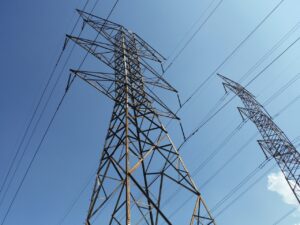Thanks to the European Fit for 55 package and an additional push on renewables and energy efficiency, Italy would be able to replace more than 80% of Russia’s gas needs in a structural manner. The remainder could be covered through existing infrastructures by 2025. However, the current Government’s strategy does not take sufficient account of the crucial contribution that energy efficiency can make to Russia’s energy emancipation plan.
Following the first analysis which showed that a mix of emergency savings and renewable energy could replace up to 50% of Russian gas imports over the next 12 months, this new study analyses the Italian Government’s strategy and medium-term options for a structural exit from Russian gas.
The current Italian response does not quantify energy efficiency contributions in its strategy, despite the fact that it is a key component of the national energy plan and a founding component of the European Fit for 55 package, as well as a significant cost item in the national budget. This is particularly surprising at a time when the development of efficiency and renewable sources does not foresee longer lead times than the extension of gas infrastructure.
The diversification options identified by the Italian Government amount to a potential replacement twice as high (59 billion standard cubic metres or smc) as the current imports from Russia (29 billion smc). However this presents a strong risk of duplication of infrastructure costs, trapping the Italian gas system for a long period (lock-in effect) and playing against decarbonisation objectives. The Italian projections do not take into account the contributions of the European Fit for 55 and RepowerEU packages, which could bring to a 40% reduction of gas consumption by 2030.
The measures indicated by the Italian Government lack the quantification of the impact of national and European energy efficiency measures and directives (e.g. ecobonus and superbonus), as well as consumption reduction targets, including those on public buildings.
The assessment estimates energy efficiency contributions at 2.3 bcm already by 2025. Additional energy efficiency measures could be added for a total estimate of 6.9 bcm. This contribution is equivalent to 24% of Russian gas imports and 60% of the energy savings already projected in the National Integrated Energy and Climate Plan (NIPEC) to 2030.
This estimate does not include additional measures that could be recovered by activating immediate savings, such as reducing the temperature of heaters and air conditioners for citizens and public offices, estimated at around 5-7 billion smc, equivalent to replacing an additional 24% of Russian imports.
Including energy efficiency measures, combined with contributions from renewables and full use of existing infrastructure, would allow for a structural diversification of Russian gas imports by 2025.
In order to ensure the contributions of energy efficiency and renewable energies, quantitative targets need to be set in the short term and implemented. It is necessary to reform, strengthen and structure current instruments supporting efficiency in public and private buildings and to introduce new instruments (conditionality and guarantees) for financing energy efficiency in the productive sector, also by targeting the PNRR funds.
Renewable targets can only be achieved by removing current obstacles to authorization, largely due to the government’s refusal to take responsibility for developing renewable energy.
The Italian Government’s response has been geared towards distributing public resources in an unselective and contradictory manner. Six months after the gas price crisis and one month after the start of the conflict, in which Italy contributed the equivalent of 3 billion euro paid to the Kremlin for buying gas, there is still no measure for companies and families to facilitate/incentivise efficiency and decarbonise production processes.
These measures – which now amount to more than €20 billion – extended over time risk becoming unsustainable and are insufficient to mitigate price increases, especially for the most vulnerable groups of the society. Electricity and gas bill subsidies are estimated at around €265 for the wealthiest family and €108 for those with the greatest difficulties. Instead, those resources should be directed towards an extension of the social bonus (electricity and gas) and the purchasing capacity of households, which is further aggravated by rising inflation. Any support measure for energy expenditure should be limited to a maximum volume of electricity and gas and not to downsize the incentive to reduce consumption when prices rise.






